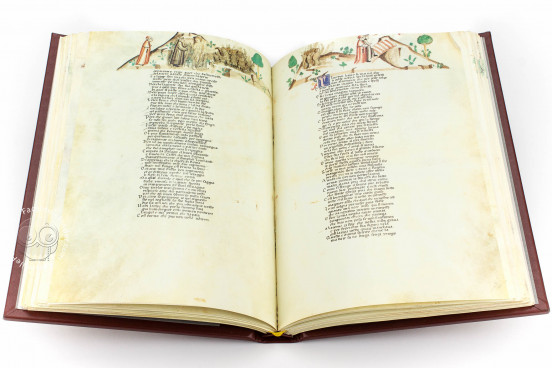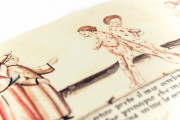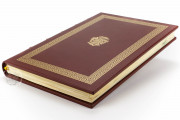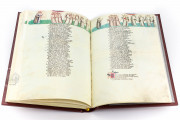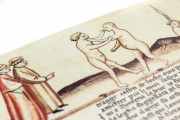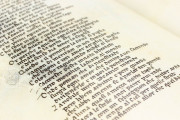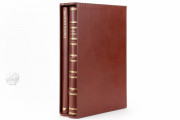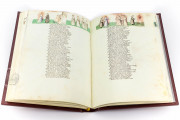The Estense Manuscript is an illuminated codex of the Divine Comedy, a long Christian moralizing poem and the masterwork of Dante Alighieri. Created in Emilia in the 1380s, the manuscript is a remarkable witness to the inventiveness of its artists, who illustrated the poem in 251 tinted drawings, all positioned in the upper margins of the book's pages, with a conscious subtle change in coloration through the poem's three cantiche ("canticles")—Inferno (hell), Purgatorio (purgatory), and Paradiso (paradise).
The poem recounts the author's journey through nine circles of hell, seven terraces of purgatory, and nine spheres of the celestial paradise. The ancient Roman poet Virgil guides him through most of the first two realms. A young woman named Beatrice leads him through paradise.
An Unusual Page Design
Although illuminators of the fourteenth century often placed imagery in the lower margin (bas-de-page) of a page, the upper margins of the text pages of medieval manuscripts rarely attracted narrative imagery. The Estense Manuscript is thus remarkable for its continuous series of images in the upper margins. Almost all portray scenes described by the poet. The exception is the pair of illustrations for Inferno, canto 11, which depict unidentifiable souls emerging from a verdant swamp (fols. 15v-16r).
Visual Mapping of the Poet's Progress
The unframed miniatures are stylistically consistent. The action of the protagonists forms a frieze across the page, with little sense of depth. Devils are always black with green or red wings, and angels are dressed in white with white wings. The terrain is strongly geometric, and the mountains resemble stepped pyramids.
There is a subtle progression through the manuscript, with the coloration becoming brighter from canticle to canticle. The vegetation in the miniatures of hell is painted an ashy gray-green. The green is brighter in purgatory and sometimes blueish in paradise. The decorated initials introducing each of the 100 canti ("songs") signal the poem's tripartite division: red on blue for hell, pink on blue for purgatory, and blue on red for paradise.
Generous Margins
The poem is written in Gothic Textualis in long lines (a single column) with generous margins. At some point in the manuscript's early history, twenty-two glosses were added: written in Venetian dialect in Gothic Cursiva, they are generally short, mostly a single word.
Seized by Napoleonic Troops
An unidentified coat of arms, perhaps that of the first owner, is included in the bas-de-page at the opening of Inferno and Purgatorio (fols. 1r and 49r). The manuscript is first reported in the Este library shortly after it was installed in the Palazzo Ducale in Modena in 1696. Upon the unification of Italy in 1871, the library became the Biblioteca Estense Universitaria. The manuscript was seized by Napoleonic troops and removed to the Bibliothèque Nationale in Paris. It was restored to Modena in 1816.
We have 1 facsimile edition of the manuscript "Divine Comedy - Estense Manuscript": Dante Estense facsimile edition, published by Priuli & Verlucca, editori, 1995
Request Info / Price
